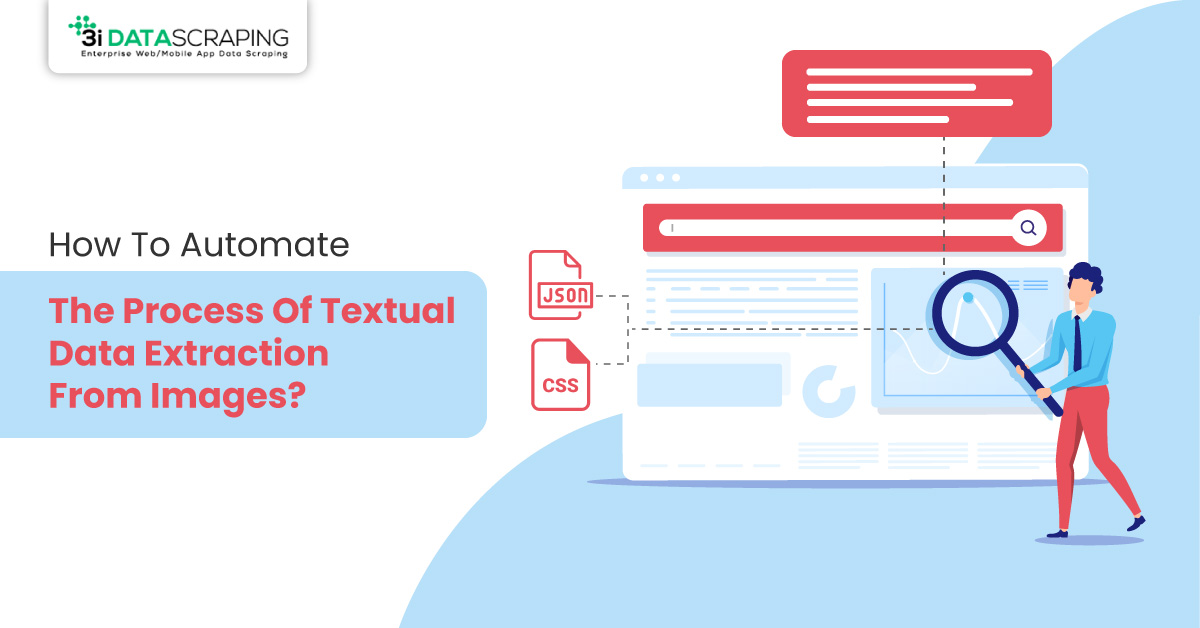Our achievements in the field of business digital transformation.










People now interact more with images, and extracting the data locked inside them has become a challenge. What should you do? Advanced tools and strategies help businesses with seamless image data extraction.
Manually working with data extraction from PDF, PNG, or JPG formats can be complicated, as it is prone to errors, time-consuming, and challenging to manage. In this content piece, we will help you understand the liberating benefits of automating the process extracting data from images.
Textual data extraction is the process of converting different types of documents, such as PDF files, scanned pages, and images, into readable textual information. It helps search, store, and maintain a business record in a single database.
This data can help make data-driven decisions that benefit the business long-term. To transform the raw data into a structured format for processing, techniques include data analysis, business intelligence, content management, and artificial intelligence.
Understanding this process empowers you to take control of your data.
The standard approach that goes through different stages for gathering and analyzing the texts are:
You invest in tools and strategies to gather data from external or internal target resources.
Structured data is organized in a specific format, making it easier to analyze and process. Data preparation, a crucial step in the data extraction process, involves organizing raw data into a structured format for easier understanding. Automating this process requires simple methods like tokenization, speech tagging, parsing, and lemmatization.
Data analysis is an important part of data scraping images as it required advanced software tools and technologies for easy processing.
Text analysis results can be converted into an understandable format according to your requirements. Converting results into charts, tables, and graphs is essential.
Textual data extraction from images is significant for analyzing scanned documents, screenshots, and images in this era. The automation process boosts efficiency and increases accuracy, consistency, and scalability. A simple automation process:
Before starting the process of textual data extraction, it is essential to know the type of images and text that needs extraction, the accuracy level, and the format of the extracted text. This will help you define clear objectives for your business.
OCR (Optical Character Recognition) tools and frameworks are crucial for automating the process of extracting textual data. These tools use advanced algorithms to recognize and convert text from images into editable and searchable data based on your specific requirements.
Image preprocessing helps to ensure the accuracy of the extracted texts, where you can automate the workflows of the data extraction:
Use the textual data scraping tools to extract Data from images:
Post-processing requires using AI models or tools to correct misspelled or incorrect information if it is extracted. Convert your raw texts into databases, tables, or key-value pairs while filtering out any sensitive information that violates privacy laws.
Automate the entire pipeline by integrating data extraction tools into your existing systems. This helps gather real-time data for intelligence solutions and identify the entities quickly.
It is essential to monitor the performance of your automated system to measure its accuracy. Include feedback to enhance the accuracy and system health for uninterrupted processing.
Automating textual data extraction from images offers a unique approach to processing and managing unstructured data, which many industries adopt globally. This will help in streamlining operations and improve productivity:
In this digital landscape, extracting textual data from images has become an integral part of many businesses. Leverage machine learning, artificial intelligence, and data scraping solutions to streamline operations.
They are helping to reduce costs, enhance productivity, and bring consistency to their business. This automation transforms the unstructured text from images to organized datasets that are easier to understand and analyze for business growth.
Organizations can use the extracted information to uncover insights, optimize operations, and identify new opportunities that align with their goals. As manual processes become less reliable, your team can focus on core tasks and plan hassle-free strategies to reach new heights and targets.